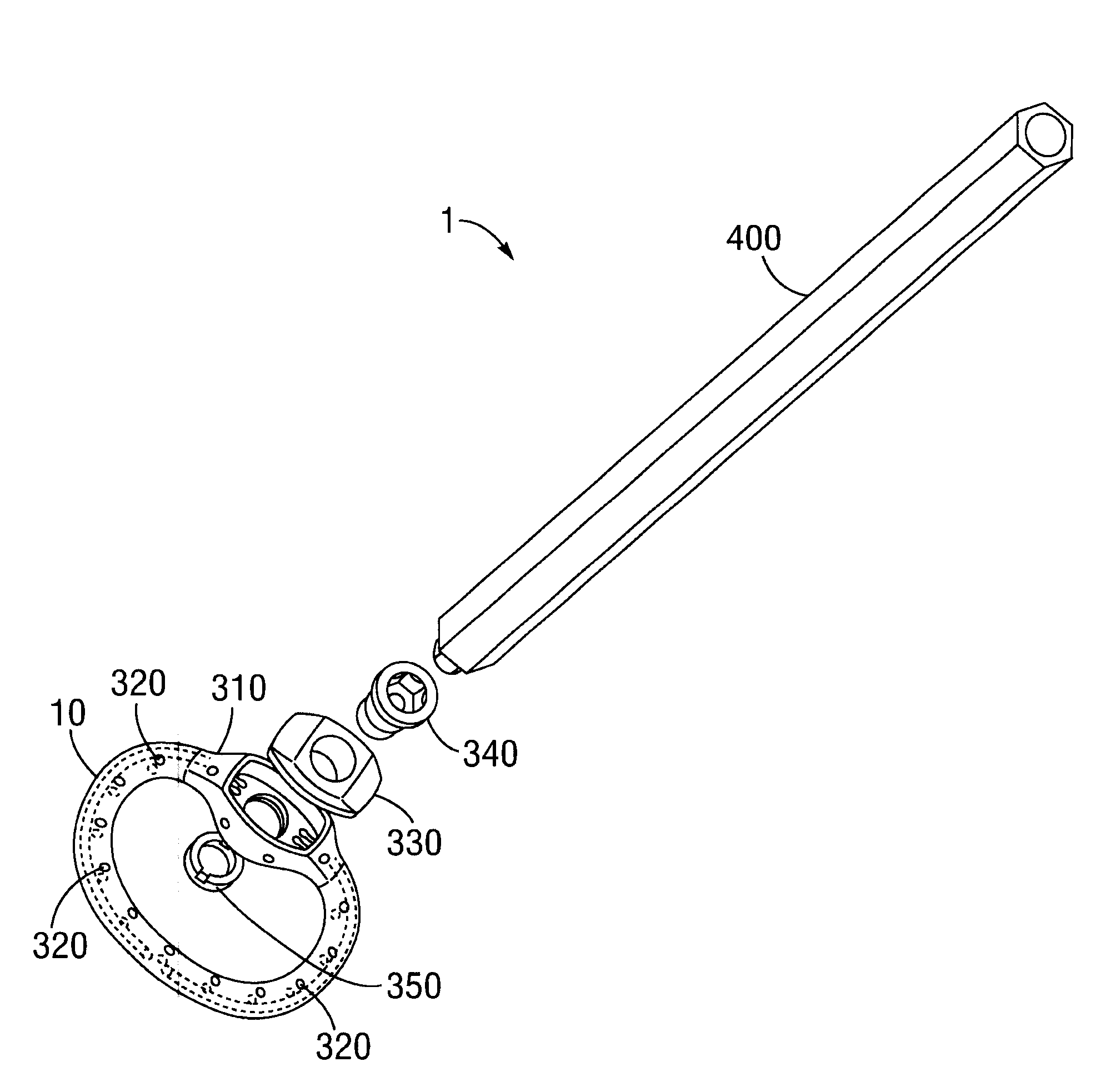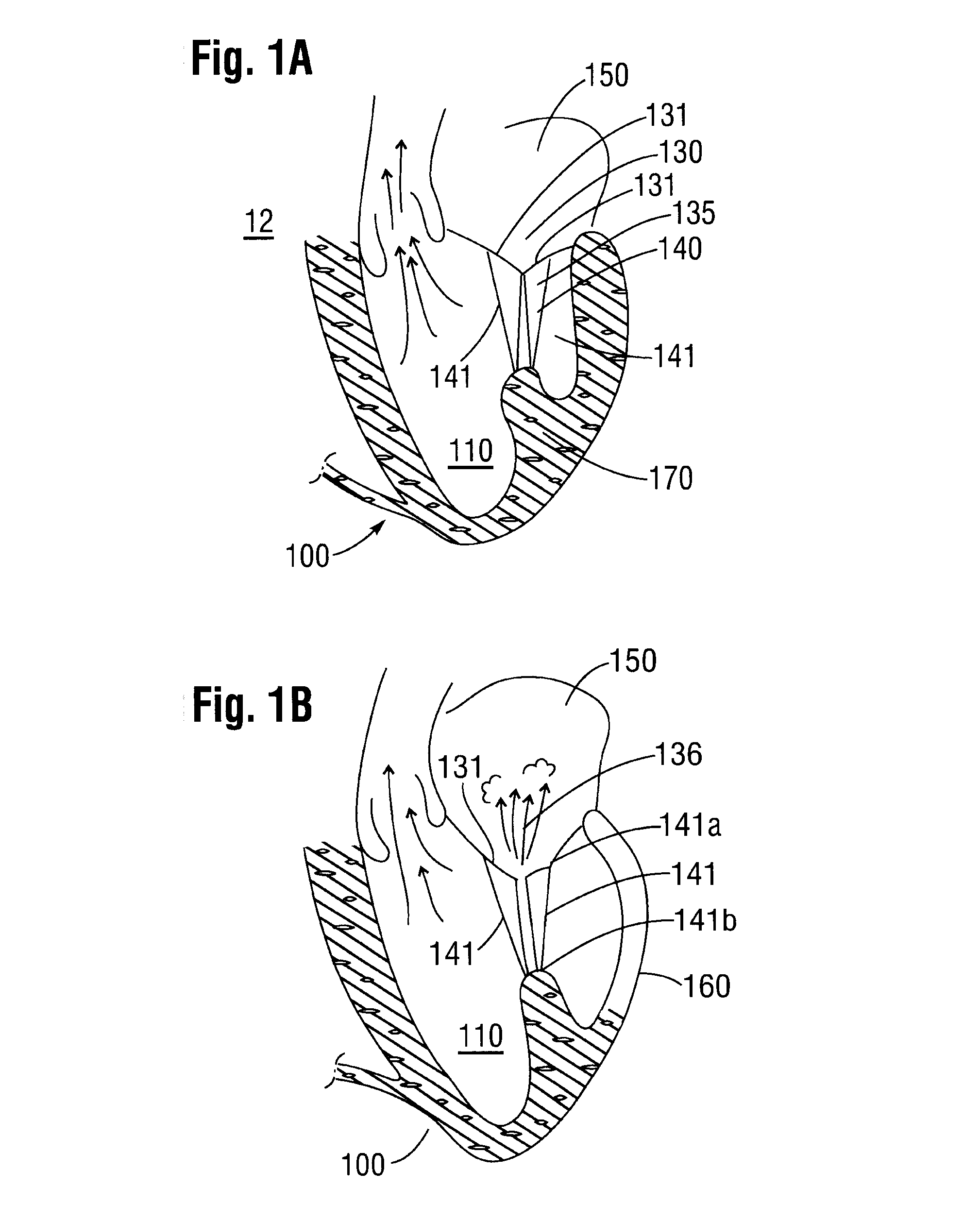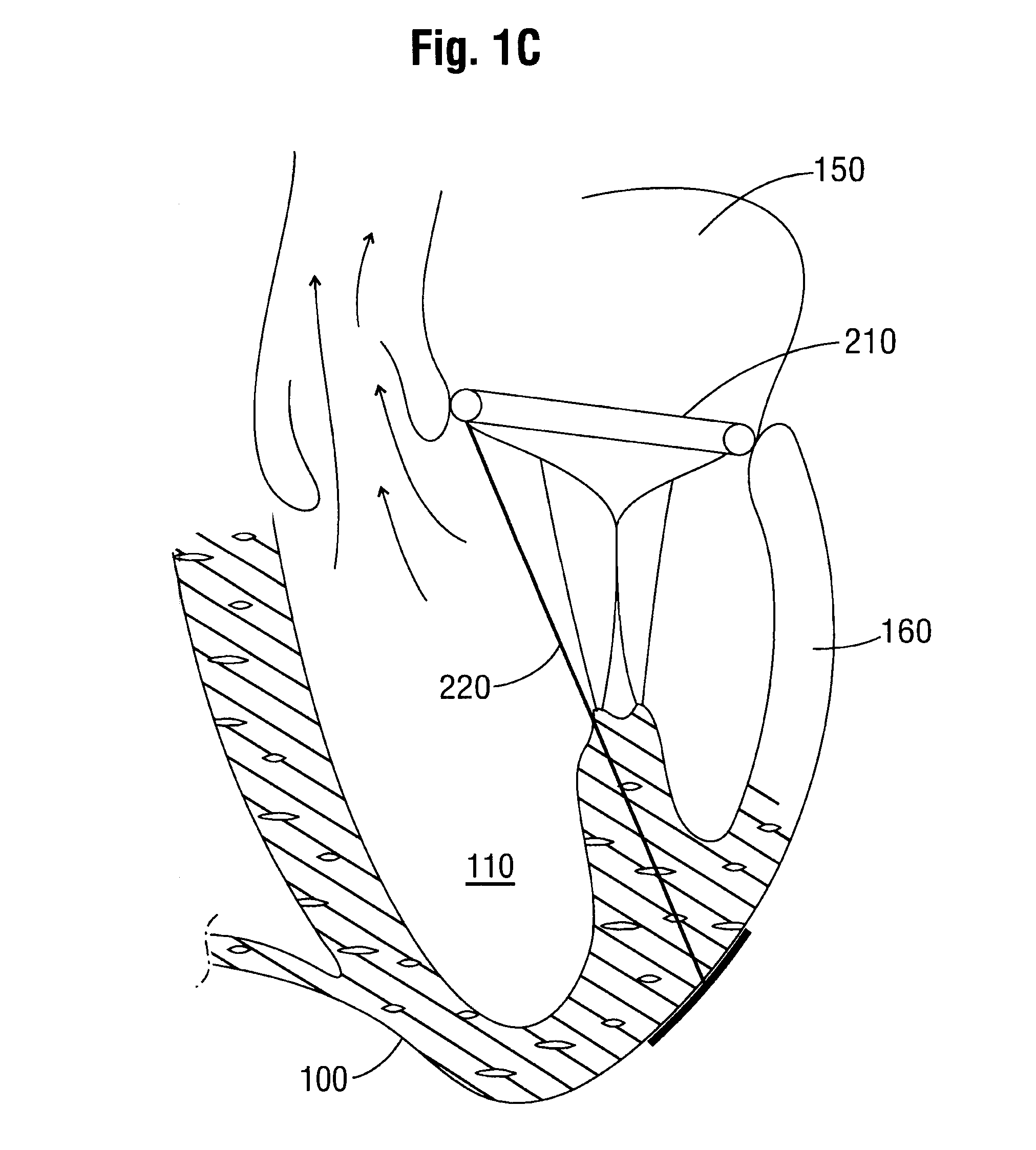System and a method for altering the geometry of the heart
a technology of geometry and heart, applied in the field of system and a method for altering the geometry of the heart, can solve the problems of fundamental cause of morbidity and mortality, valve becomes insufficient, and the mitral regurgitation is the main cause of death, so as to achieve an advanced approach
- Summary
- Abstract
- Description
- Claims
- Application Information
AI Technical Summary
Benefits of technology
Problems solved by technology
Method used
Image
Examples
Embodiment Construction
[0046]Initially and in order to describe the present invention, an example of a physical condition of a heart 100 that can be remedied using the system and the method of the present invention is briefly described with reference to FIGS. 1A-C. FIG. 1A shows a section through a portion of a normally functioning heart 100. More particularly, FIG. 1A shows in schematic form a long-axis section through a left ventricle 110 of a normal heart 100 during systole. The aortic valve 120 is open (the arrows in the vicinity of the valve 120 indicating the flow of blood), while the mitral valve 130 is closed. The mitral valve 130 has two leaflets 131. Primary and secondary chordae 140, 141 ensures that the two leaflets 131 of the mitral valve 130 interact over a broad, so-called coaption area 135 to ensure a tight mitral valve 130 function, thus preventing blood to re-enter the left atrium 150 (mitral regurgitation 136, see FIG. 1B). In the figure (FIG. 1A) also one papillary muscle 170 is shown....
PUM
 Login to View More
Login to View More Abstract
Description
Claims
Application Information
 Login to View More
Login to View More - R&D
- Intellectual Property
- Life Sciences
- Materials
- Tech Scout
- Unparalleled Data Quality
- Higher Quality Content
- 60% Fewer Hallucinations
Browse by: Latest US Patents, China's latest patents, Technical Efficacy Thesaurus, Application Domain, Technology Topic, Popular Technical Reports.
© 2025 PatSnap. All rights reserved.Legal|Privacy policy|Modern Slavery Act Transparency Statement|Sitemap|About US| Contact US: help@patsnap.com



